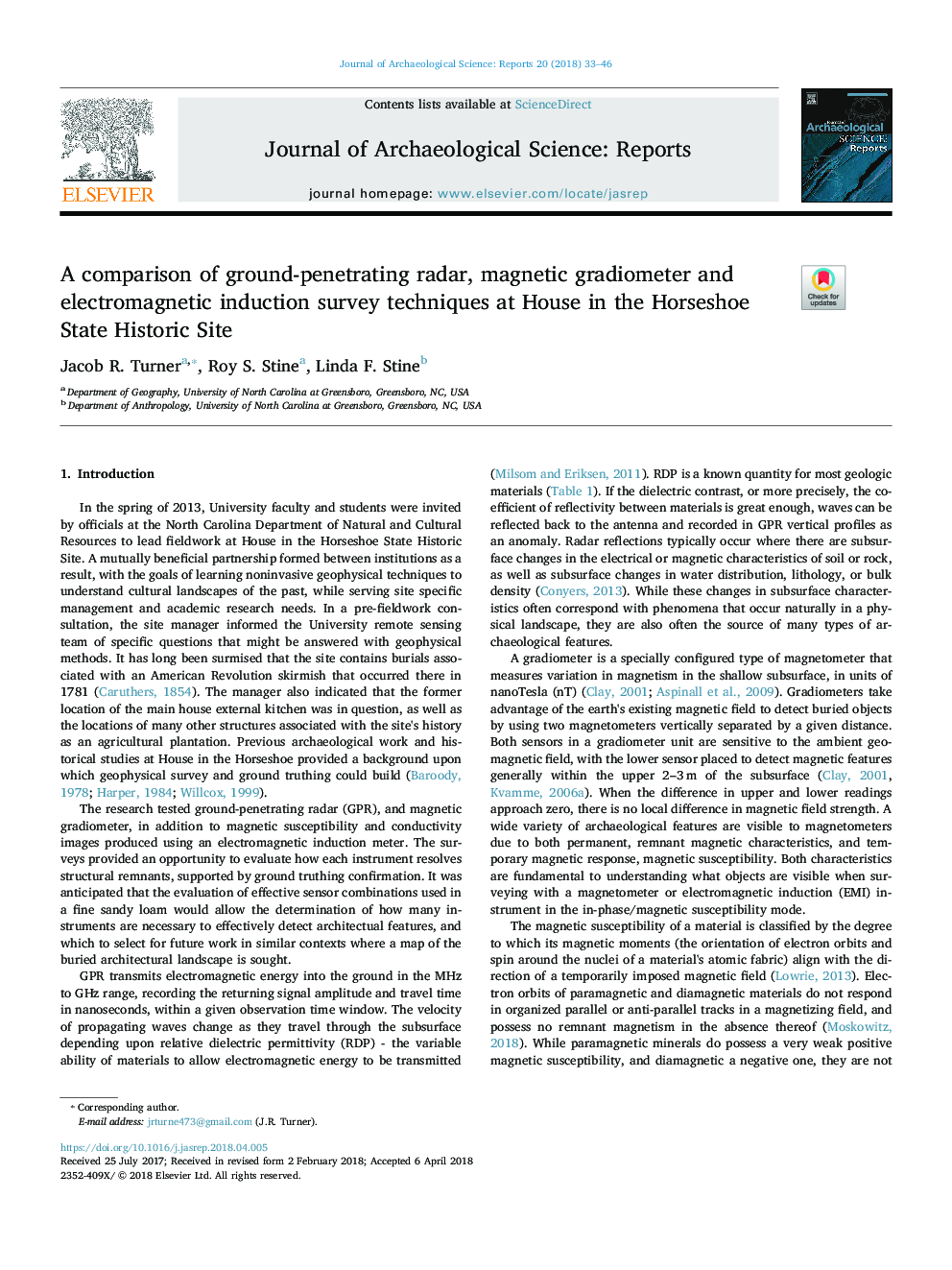| Article ID | Journal | Published Year | Pages | File Type |
|---|---|---|---|---|
| 7444234 | Journal of Archaeological Science: Reports | 2018 | 14 Pages |
Abstract
In 2013 and 2014, University students and faculty joined with the North Carolina Office of State Archaeology and Historic Sites Division to expand upon previous archaeological work at House in the Horseshoe using geophysical methods. 2,840 square meters of the site were surveyed using Ground-Penetrating Radar (GPR), magnetic gradiometer, and electromagnetic induction (EMI) meter with the goal of determining which sensors perform best when identifying historic site features in fine sandy loam and in what combination. The instruments identified four structure areas that were ground truthed to confirm anomaly source and determine cultural association. GPR precisely identified the depth and extent of a large historic pit and a smokehouse floor, and was well paired with the gradiometer, which offered additional clues as to the intact extent and exposure of features to intense heat. Conductivity and magnetic susceptibility images at House in the Horseshoe provided a view of many objects close to the surface that GPR and gradiometer were less effectively able to articulate. Survey results from this study, paired with excavation data, provide excellent examples of how typical historic features might appear within different geophysical images, serving as an interpretive data source for others who wish to use geophysical methods to map, interpret, and understand the hidden cultural landscape present on a historic site.
Related Topics
Social Sciences and Humanities
Arts and Humanities
History
Authors
Jacob R. Turner, Roy S. Stine, Linda F. Stine,
